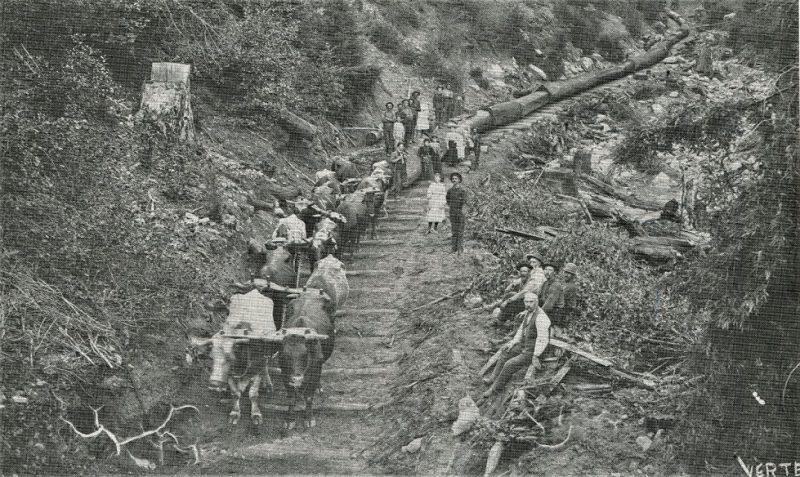Penn Township was carved out the once much larger Pike and Chest townships in Clearfield County as early as 1835. Its early settlers made up a diverse background, ranging from Irish Catholics to English Quakers. Other religious and ethnic groups added to the mix.
A good deal of the township is today, along state Route 219, sandwiched between Grampian and Mahaffey boroughs. It contains the villages of Walltown, Irishtown and Hepburnia. The landform contains farm fields, some rolling hills and steeper ones that lead down to the Susquehanna River near Lumber City.
Hard-working farmers made the lands in Penn Township thrive but the impact of the logging and rafting industry was vital to the area’s economic growth.
There were logs to be had and money to be made from their sale, but transporting them to the river in Lumber City to make the rafting or floating journey, past Curwensville and Clearfield, to points hundreds of miles downriver wasn’t easy.
The best roads were little more than dirt or mud paths. Without railroads to reach more remote parts of Penn Township, animal power was the only reliable means to reach the river. It couldn’t, as the photo shows, have been a smooth journey.
The McKenrick Lumber Company was one of many in Clearfield County during the latter decades of the 19th century. Again, as the photo shows, its owners and employees were willing to undergo a good deal of physical hardship to move their logs, likely for miles, to the Susquehanna.
There were a number of plank roads built mostly of substandard or scrap boards, in order to make a crude and somewhat flat surface over which wagons and sleds could move.
The photo shows a log road with the top rounded surfaces of the logs spaced a few feet apart. The wooden sledge blades could be drawn over them.
It must have been a grueling and labor-intensive project to clear a path in the soil and rock, at such a steep grade, to implant and secure the log surface.
A “log train” was put into place and pulled by a half dozen pair of strong oxen. The oxen would have to be carefully controlled, as they dragged the logs downhill, lest the log sleds buckle against them. Pulling logs uphill would require massive strength. The oxen were the railroad engines of the photo.
An ox, today, is a rare sight. The Clearfield County Historical Society’s Kerr House Museum displays a wooden ox yoke. It too has become a rare sight.
